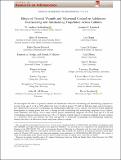| dc.contributor.author | W. Andrew Rothenberg, Jennifer E. Lansford,Marc H. Bornstein,Lei Chang,Kirby Deater-Deckard,Laura Di Giunta,Kenneth A. Dodge,Patrick S. Malone,Paul Oburu,Concetta Pastorelli,Ann T. Skinner,Emma Sorbring,Laurence Steinberg,Sombat Tapanya,Liliana Maria Uribe Tirado,Saengduean Yotanyamaneewong,Liane Peña Alampay,Suha M. Al-Hassan,Dario Bacchini | |
| dc.description.abstract | We investigated the effects of parental warmth and behavioral control on externalizing and internalizing symptom tra jectories from ages 8 to 14 in 1,298 adolescents from 12 cultural groups. We did not find that single universal trajecto ries characterized adolescent externalizing and internalizing symptoms across cultures, but instead found significant
heterogeneity in starting points and rates of change in both externalizing and internalizing symptoms across cultures.
Some similarities did emerge. Across many cultural groups, internalizing symptoms decreased from ages 8 to 10, and
externalizing symptoms increased from ages 10 to 14. Parental warmth appears to function similarly in many cultures
as a protective factor that prevents the onset and growth of adolescent externalizing and internalizing symptoms,
whereas the effects of behavioral control vary from culture to culture. | en_US |

